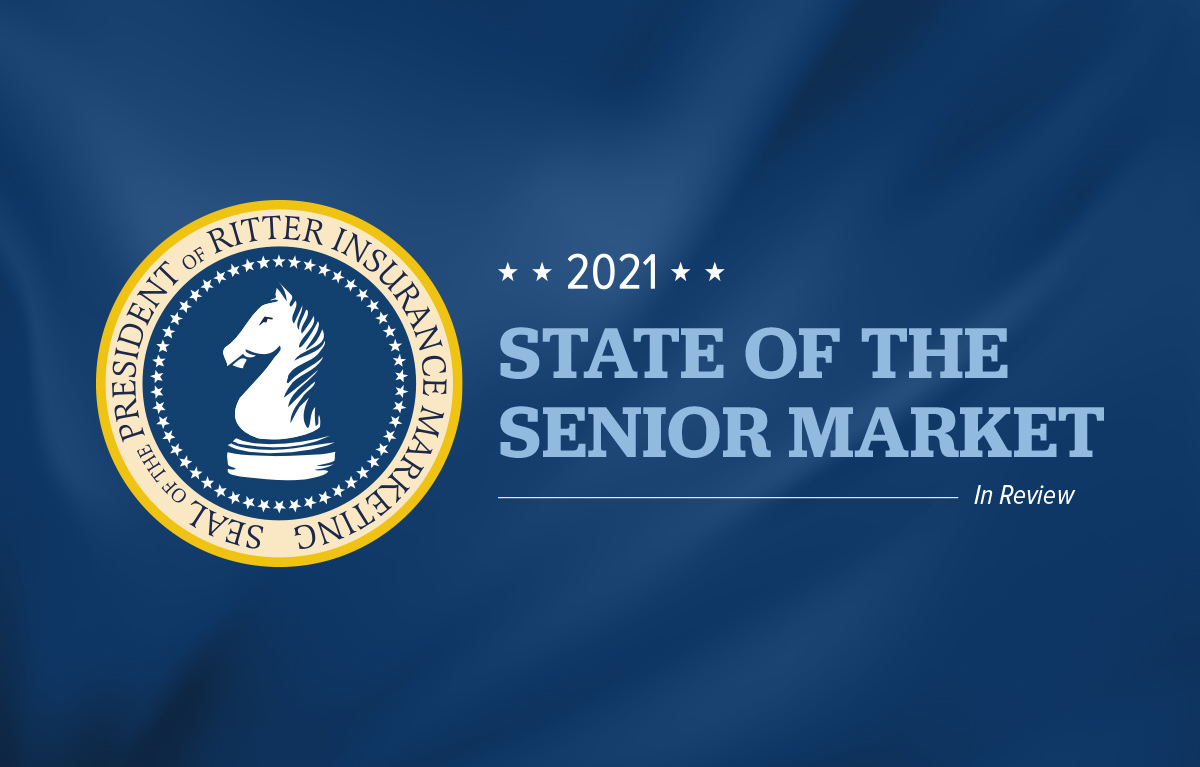The 2024 marketplace Open Enrollment Period (OEP) runs November 1, 2023, to January 15, 2024. This is the most crucial time for your clients who are under 65 and in need of an Affordable Care Act health plan.
Below are some of the most important things to know before assisting clients with finding coverage this OEP.
Listen to this article:
Need help getting ready-to-sell on the federal or state exchanges? Learn more about how to prepare for the OEP
Collect Your Clients’ Demographic Information
To determine what type of coverage will work best for your client, collect their demographic details. Information such as household income, the number of members applying for coverage, and the gender and ages of all applicants is necessary to evaluate all plan options. The marketplace application also asks for this information, so you’ll need it to fill out the application anyway.
Household income will determine whether your client is eligible for premium tax credits, or subsidies. Legislation such as the Inflation Reduction Act (IRA) has influenced who is eligible for subsidies and for how long. Read our report on the state of the Affordable Care Act (ACA) market to find out if your client qualifies.
The number of applicants is important to note if you have more than one individual signing up for coverage. As their agent, you’re required to provide information regarding all children who reside in the household (even if they make enough money to file their own tax return), anyone who is included on your client’s tax return as a dependent (even if they don’t reside in the same household), and anyone else under 21 who resides in the home.
The family glitch has been closed, qualifying more people for subsidized ACA coverage! Read our post now to learn more!
Additionally, where your client lives can affect what health coverage they are eligible for. For example, some states have their own exchanges and others participate in the federal exchange. Become familiar with the right exchange for your client to identify where they need to register for coverage.
Gathering this basic information is the first step to accessing affordable health care options for your clients who need them the most.
Easily manage clients’ demographic info in the Ritter Platform! Become a Ritter agent today for access!
How to Find Providers Available in Your Clients’ Area
After determining the right exchange to find a plan, the next step is to understand which major hospital systems operate in your clients’ area. It can be helpful to understand which carriers participate with which hospital systems. You can find which hospital systems are active in your clients’ area by searching carriers’ websites for specific providers. If using an enrollment platform such as HealthSherpa, you can follow the direct links to the carrier page to utilize their provider search tool. Currently, HealthSherpa is only available for states participating in the federal exchange. Many state-based marketplace enrollment sites will allow you to access provider search tools as well.
Enhanced Direct Enrollment (EDE) tools such as HealthSherpa can be helpful to enroll clients and manage their plan in one platform. Register with Ritter today to have access to a FREE HealthSherpa account to streamline this process!
We recommend searching for hospital systems for each client. Consider their preferences or specific health needs when identifying the carrier and network that’s right for them. Make sure you communicate with your client throughout this process to ensure that their needs are being met. If your client has a current primary care provider (PCP) that participates in a plan’s network, consider that carrier for their marketplace coverage.
Make sure you communicate with your client throughout this process to ensure that their needs are being met.
What Plan Options Are Available?
Insurance carriers offer many different type of ACA plans. There are three different plan types regarding provider networks: Health Maintenance Organization (HMO), Preferred Provider Organization (PPO), and Exclusive Provider Organization (EPO).
HMO & EPO plans limit coverage to a local network of physicians and facilities and typically will not cover out-of-network care, except for emergency services. PPO plans have a larger medical provider network and will cover costs out-of-network but for a higher premium. The table below summarizes the key differences between HMO, PPO, and EPO plans.
HMO, PPO, and EPO Plans
| Plan Type | HMO | EPO | PPO |
|---|---|---|---|
| Network Size | Small, local | Medium, local | Large |
| Out-of-Network Coverage | For emergencies only | For emergencies only | With an added cost |
| Monthly Premium Cost | Lowest | Moderate | Highest |
| Flexibility | Limited | Moderate | High |
HMO plans require a referral from a PCP in order to see a specialist, while PPOs and EPOs do not. Because of this, some individuals may choose an EPO or PPO plan for added flexibility. However, these more flexible plans are also more expensive. Consider both flexibility in network and affordability when your client is choosing a plan.
In addition to the three plan types, there are four metal tiers: bronze, silver, gold, and platinum. These tiers separate how medical costs are shared between the policy and the beneficiary. The levels do not describe the quality of care or the services that are covered by the insurance provider. The table below shows the basic structure of the four metal tiers.
The Metal Tiers for ACA Health Plans
| Tiers | Bronze | Silver | Gold | Platinum |
|---|---|---|---|---|
| % Covered Medical Costs Paid by the Policy | 60% | 70% | 80% | 90% |
| % of Covered Medical Costs Paid by the Policyholder | 40% | 30% | 20% | 10% |
| Monthly Premium Comparative Cost | Lowest | Moderate | High | Highest |
| Unsubsidized Annual Deductible Comparative Cost | Highest | Moderate | Low | Lowest |
| Eligible to Apply a Cost-Sharing Reduction? | No | Yes | No | No |
| Eligible to Apply a Premium Tax Credit? | Yes | Yes | Yes | Yes |
As you can see from the table, as the metal tiers go up, a member’s coinsurance responsibility goes down while the plan’s coinsurance responsibility goes up. The most prevalent tier in the marketplace is silver because clients can apply a premium tax credit to reduce costs.
When Coverage Will Begin
In order for coverage to begin, help your clients successfully complete their application and then direct them to pay the first monthly premium.
Here’s how your clients can access their account:
- Log in to HealthCare.gov.
- Select the application under Your Existing Applications.
- Click the blue button that says Pay Your First Health Insurance Monthly Premium.
- If online payment is available, select the green button Pay for Health Plan Now to go to the insurance company’s website to pay.
Some insurance companies do not participate in online payment. In this situation, the carrier will contact your client about next steps.
For health plans that were signed up for during the beginning of the OEP, most coverage will begin January 1, 2024. For plans that were sold between December 16 and January 15, the coverage will be effective February 1. Effective dates can vary between exchanges. For example, some states may have an extended OEP, allowing a client to enroll in ACA coverage as late as January 31 and have an effective date of March 1. Ensure the correct effective date for your clients’ correct exchange and plan and advise them when their coverage will begin.
Verify that your clients’ coverage is active by signing into HealthCare.gov and checking under My Plans and Programs.
For health plans that were signed up for during beginning of the OEP, most coverage will begin January 1, 2024.
What Happens If Your Client Misses the OEP?
If you and your client miss the OEP, there could be other options to access affordable health care through the marketplace. In case of significant changes, your client may be eligible for a Special Enrollment Period (SEP). Life changes, such as having a baby, changes in residence, or loss of health insurance, will qualify an individual for an SEP to enroll in marketplace insurance plan. An SEP is the only way to register for marketplace coverage outside of the OEP.
Verify that the application information is correct, including the information that qualifies your client for a SEP. Your client may be asked to provide additional documentation to confirm eligibility based on the life event experienced.
If your client is not eligible for an SEP, but still requires health care coverage, consider a short-term medical policy (where available). This is an option for clients that can pass health underwriting to get coverage until the next enrollment period. These plans are not ACA-compliant, but are an excellent option to have available in your portfolio for clients who need them.
The OEP is a crucial time for your clients under 65 who are looking to sign up for a marketplace plan. Your clients are counting on you to guide them through the process. These essentials will allow you to prepare your clients for enrolling in their new marketplace insurance plan.
Ritter is committed to keeping our agents in the know, register with our site to stay informed.
Editor’s Note: This was originally published in October 2022. It has been updated to include information more relevant to 2024 OEP.






Share Post